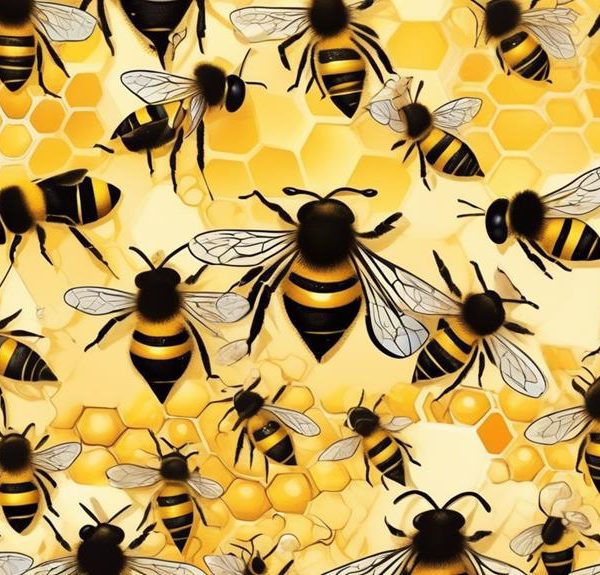Wade through the buzz and discover safe, effective methods to rid your chimney of bees without causing harm or damage.
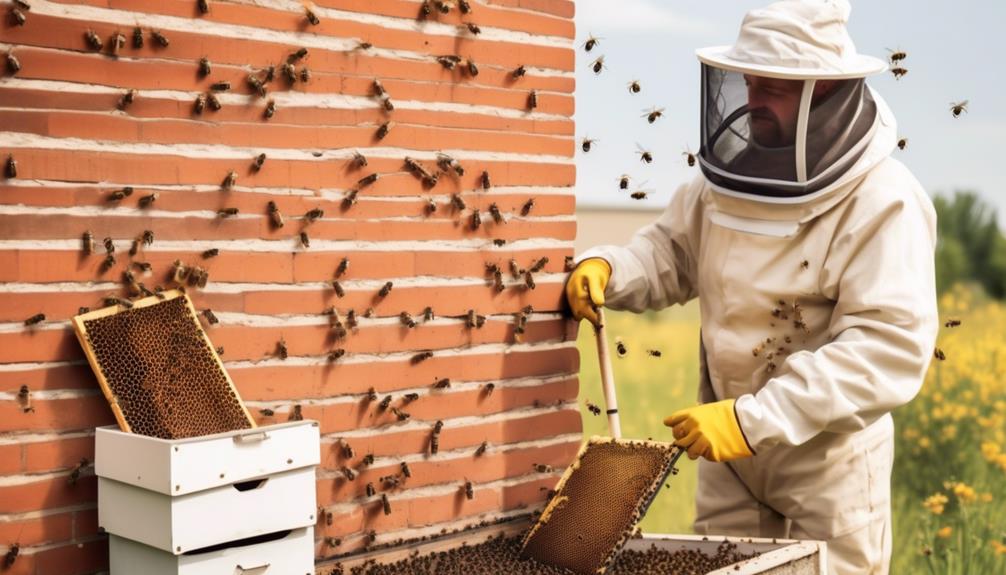
How to Get Bees Out of Chimney?
Just when you're settling in for a relaxing evening by the fire, you hear a buzzing sound from the chimney, and suddenly, you're dealing with a bee invasion. This isn't a rare occurrence, it's actually quite common for bees to set up their hives in chimneys, attracted by the sheltered, dark environment it provides.
You're probably wondering what to do next. How can you safely and effectively remove these unwelcome guests from your chimney? It's crucial to understand that different bee species require different removal approaches, and improper handling can lead to potential bee attacks or damage to your chimney.
Let's explore the options.
Key Takeaways
- Bees choose chimneys for their dark, enclosed spaces and the protection and warmth they provide.
- Identifying the bee species is important for determining the appropriate removal method.
- Safety precautions, such as wearing protective gear and avoiding pesticides, are crucial during bee removal.
- Professional removal is recommended to ensure the safety of both the bees and the individuals involved, although it can be costly. Preventative measures, such as installing a chimney cap and regular maintenance, can help prevent future bee invasions.
Understanding Why Bees Choose Chimneys
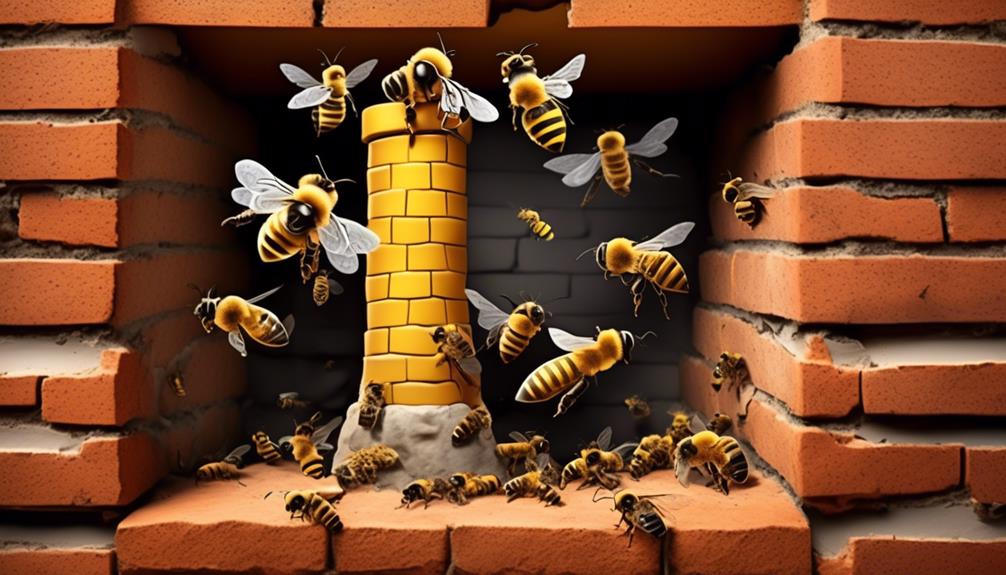
In order to effectively remove bees from your chimney, you first need to comprehend why these industrious insects often choose such an odd location for their hive. Chimneys, with their dark, enclosed spaces and relative isolation from human activity, provide a perfect environment for bees. They're attracted to the protection and warmth, especially when preparing for winter.
The honeycomb structure of a hive is delicate, and chimneys provide a stable environment for its construction. The narrow structure makes it difficult for predators to access, thus providing a safe haven for the colony. Moreover, the cool draft from the chimney helps maintain the optimal temperature for bees to thrive.
Understanding this, you're better equipped to deal with the issue at hand. Remember, it's crucial to approach the situation with caution. Bees are vital to our ecosystem, and their welfare should be a priority. Their relocation should be handled by professionals who possess the necessary knowledge and equipment to ensure their safe removal and relocation.
Identifying the Bee Species
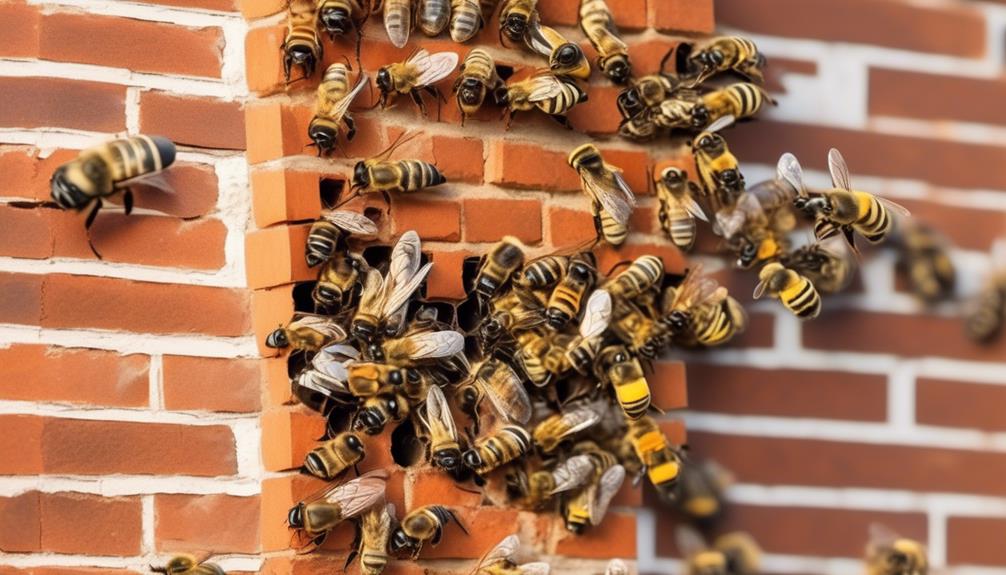
Before you proceed with any action, it's crucial to accurately identify the species of the bees in your chimney, as different species require different removal methods. The three main types of bees you might encounter are honeybees, bumblebees, and carpenter bees.
Honeybees are small and vary in color from yellow to brown. They're typically less aggressive, but their presence can be problematic due to their tendency to build large hives.
Bumblebees are larger, with a distinct black and yellow striped body. They're generally harmless unless they perceive a threat to their nest.
Carpenter bees, on the other hand, are large and mostly black. They bore into wood to create nests, which could potentially damage your property.
To identify the type, observe their physical characteristics and behavior. Note the color, size, and shape. Also, consider their aggressiveness and the location and size of their nest. Taking a photo from a safe distance could also be helpful.
Essential Safety Precautions
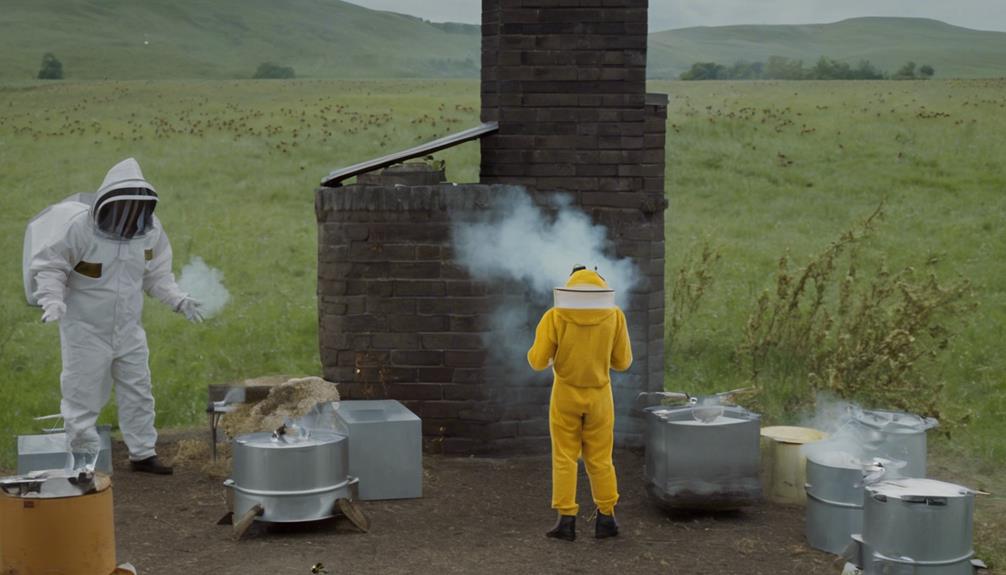
Once you've identified the species of bees, it's vital to take certain safety precautions to protect yourself and others from potential stings or allergic reactions during the removal process. Remember: safety is paramount, so always put it first.
Firstly, ensure you're wearing appropriate protective gear. This includes a bee suit, gloves, and a veil to protect your face. You can't afford to take chances with bee stings. They're not only painful, but can also cause serious allergic reactions.
Secondly, avoid using pesticides or insecticides if possible. They're generally harmful and can provoke bees into stinging. Instead, consider using smoke to calm the bees, making them easier to handle. However, be mindful that excessive smoke can suffocate the bees.
Thirdly, if you're allergic to bees, don't attempt the removal yourself. Seek professional help instead. It's better to be safe than sorry.
Lastly, ensure that bystanders, particularly children and pets, are kept at a safe distance during the removal process. This reduces the risk of them getting stung.
Professional Vs DIY Removal

Weighing the pros and cons of professional removal versus DIY methods is a critical step in deciding how to proceed with your bee problem. While you may be tempted to tackle the job yourself to save some money, it's important to consider the risks involved.
DIY methods can be dangerous if you're not fully prepared or experienced in bee handling. You're dealing with a swarm of insects that can easily become aggressive if disturbed. Additionally, without the proper equipment and knowledge, you risk causing more harm than good to the bees.
On the other hand, hiring professionals comes with its own set of benefits. They're trained and experienced in safely removing bees from homes. They've the necessary equipment and protective gear to do the job effectively and safely. Plus, professional beekeepers understand the importance of preserving bee populations and will typically remove the bees without harming them.
However, professional services can be costly. You'll need to factor in the cost of the service and possibly some additional fees for more complex infestations. Overall, it's a balance between safety and cost, and you'll need to decide what's most important to you.
Preventing Future Bee Invasions
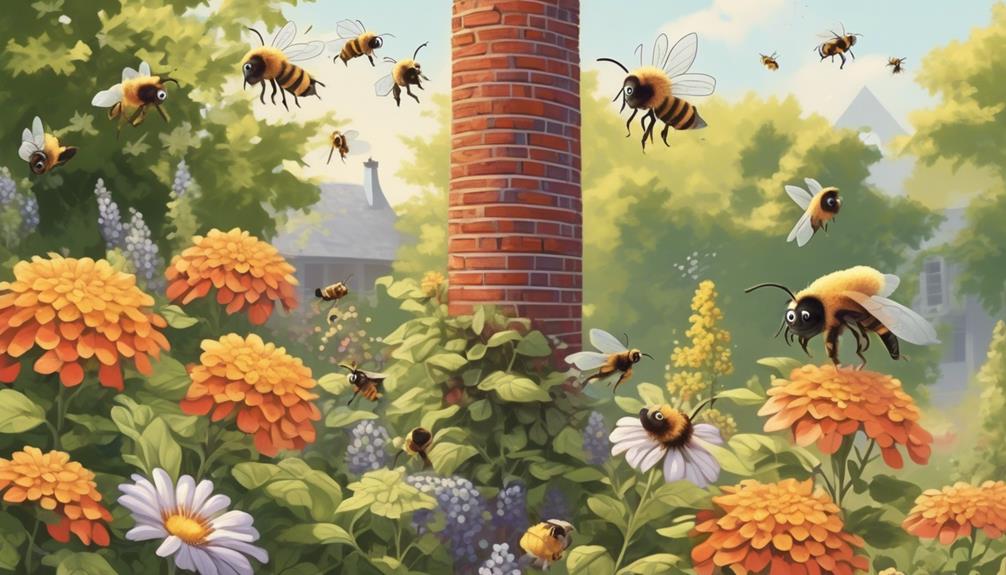
Now that you've tackled the immediate problem, it's crucial to take proactive measures to prevent future bee invasions in your chimney.
First, consider installing a chimney cap. It's a simple, yet highly effective solution to keep bees and other pests out. It also protects against rain and debris. Make sure it's correctly installed and tightly secured to prevent any gaps.
Next, try to make your chimney less attractive to bees. Regularly inspect and seal any cracks or crevices. Bees are drawn to locations that provide shelter, so a well-maintained chimney is less inviting.
Using a professional pest control service for regular inspections can be beneficial. Their experienced eyes can spot potential problems you might miss.
In addition, avoid planting bee-attracting flowers near your chimney. Choose plants that repel bees instead, like geraniums or marigolds.
Lastly, remember that prevention is always better than cure. Regular maintenance and inspections can save you time, effort, and money in the long run. It's worth investing to prevent future invasions, rather than dealing with recurring infestations.
Frequently Asked Questions
What Are Some Common Signs That Bees Have Made a Hive in My Chimney?
You'll likely notice several signs if bees have made a hive in your chimney.
- You might hear buzzing sounds, especially on warm days when bees are active.
- Seeing bees regularly flying near your chimney top is another clue.
- You may also find dead bees inside your house, near the fireplace.
- In some cases, you might even notice small amounts of honey or wax dripping down the inside of your chimney.
Are There Specific Seasons or Weather Conditions When Bees Are More Likely to Invade Chimneys?
Yes, there are specific seasons when bees are more likely to invade chimneys. They're most active during the warmer months of spring and summer. During these seasons, bees search for new places to establish their colonies, and chimneys often provide the ideal secluded location.
Rainy or cold weather typically discourages bees from swarming. So, you'll notice a significant increase in bee activity during periods of warm, sunny weather.
How Long Does It Usually Take for a Professional to Safely Remove Bees From a Chimney?
The duration it takes a professional to safely remove bees from a location can vary greatly. It depends on the size of the bee colony, accessibility, and the method used. On average, you're looking at a few hours to a full day.
It's important not to rush this process as it's crucial to ensure all bees are safely removed to prevent a return. A professional will also take time to clean and secure the area.
Can Bees Cause Structural Damage to My Chimney or Home?
Yes, bees can cause structural damage to your chimney and home. They can burrow into mortar, wood, and even plaster. Over time, these tiny holes can weaken your structure.
Additionally, if bees create a hive, the weight and honey can lead to further damage. It's crucial to address a bee infestation promptly to prevent extensive harm.
Always consider professional help as they'll handle the situation safely and effectively.
Are There Any Potential Health Risks Associated With Having Bees in My Chimney?
Yes, having bees in your chimney can pose health risks.
If you're allergic to bee stings, the risk is immediate and serious. Bees can also carry diseases that could potentially harm you or your family.
Over time, a hive in your chimney can cause structural damage, leading to further health hazards such as mold growth.
It's crucial to address a bee infestation promptly and professionally to ensure your safety.
Conclusion
In conclusion, understanding why bees choose your chimney and accurately identifying the species is crucial.
It's essential to take safety precautions before attempting removal, whether DIY or professional.
Remember, the goal isn't just to remove the current infestation but to prevent future ones.
With the right knowledge and action, you can maintain a bee-free chimney, protecting both your home and our essential pollinators.

